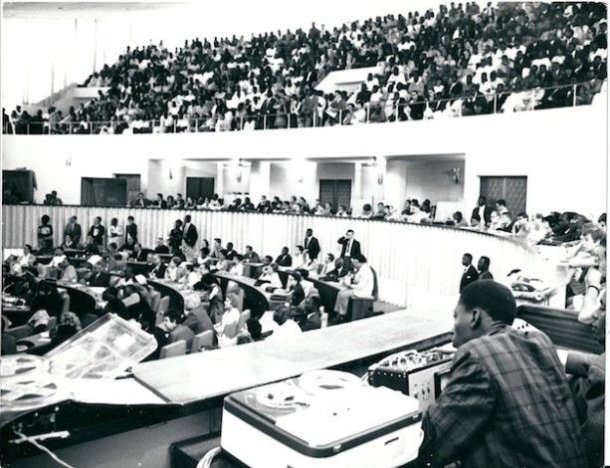Os primeiros festivais e encontros de arte africanos pós-independências
Publicado22 Out 2014
Imagem: World Festival of Negro Arts, Dakar, 1966
Cédric Vincent é crítico de arte e antropólogo, associado como pós-doutorado ao Centre Anthropologie de l’écriture (EHESS-Paris). Neste artigo, revisita os primeiros encontros e festivais africanos pós-independência, analisando o impacto político de quatro eventos: World Festival of Negro Arts (Dakar, 1966), Pan-African Cultural Festival (Argel, 1969), The Zaire 74 Festival (Kinshasa, 1974) , The Second World Black and African Festival of Arts and Culture/FESTAC (Lagos, 1977).
As shown above, the grand events in question had a global impact and continue to be remembered as symbols of a cultural Golden Age. They owe this memory to their political character. It would be inaccurate to think of these four festivals as “mere” cultural and artistic events. Rather, they were central nodes in a network of relations and representations, situated at the very heart of movements that had fundamental global effects on the structuring of the nation-state and the incipient political imaginary. As sites of coordination and mediation between artistic creators and decision-makers on one side and widely disparate audiences on the other, they served as sounding boards for the public dissemination of ideas that had previously been confined to the elite. As showcases for the states that organized and participated in them, they served as entranceways – via the artists’ work – for diplomacy around various issues at various scales: among young African nations, between culturally Arab North Africa and sub-Saharan Africa, between independent countries and liberation movements in the remaining colonies and apartheid regimes, between the Americas and Africa, between former metropolises and former colonies, and between international organizations and bilateral cooperation structures.
O artigo completo, na Contemporary and

